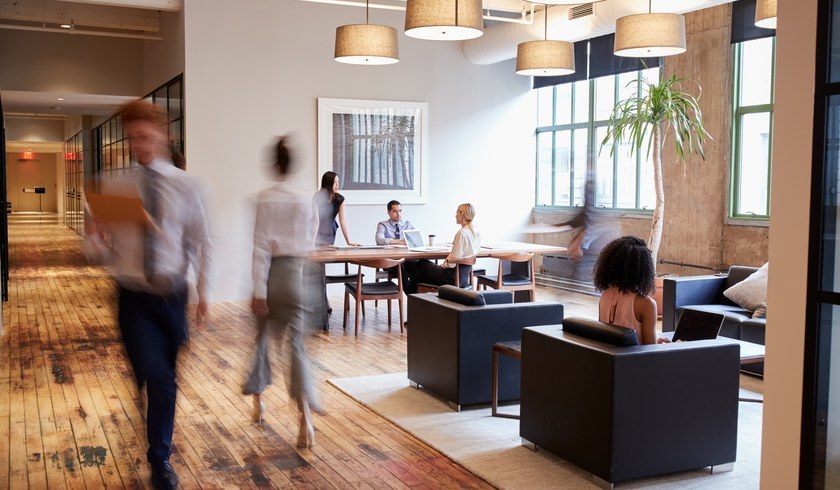24/04/2024
Every blueprint holds the potential to shape a space and how we interact within it. As such, the benefits of workplace design are manifold – and they're there for the taking.
However, good workplace design is about much more than trendy office furniture, the latest technology, and mood lighting. Indeed, a person-focused environment that harnesses both functionality and innovation has the ability to drive employee engagement and create a stronger company culture.
As the research shows, a workspace that aligns with an employee's ideal work environment can also enhance productivity levels. So, how can you unlock this untapped resource? Keep reading.
According to research, 65% of office workers believe that if the style of their office matches their ideal workplace environment, then their productivity levels will rise. Research by Dell also found that 73% of UK office workers would consider leaving their workplace if it didn’t inspire them to fulfil their role.
It all comes down to psychology. Picture yourself walking into a workplace flooded with natural light, incorporating nature and comfort. Now, imagine an alternative office, dimly-lit, with outdated technology and a stuffy atmosphere. Which feels like the most productive environment? Where do you imagine you'll experience stronger employee engagement?
With the conversation around working from the office and working from home still raging on, it's never been more important to provide employees with an office space that drives a sense of community, and offers benefits that can't be accessed from home.
Done correctly, purposeful office design – that is to say, office spaces designed with employees in mind – has the potential to make teams feel motivated and engaged, fostering both creativity and collaboration.
Over the past few years, there has been a notable decline in the UK's productivity – a measure of how smart we work (rather than how hard we work). That is to say, getting more done in the working day, which for most of us would be a typical nine-to-five.
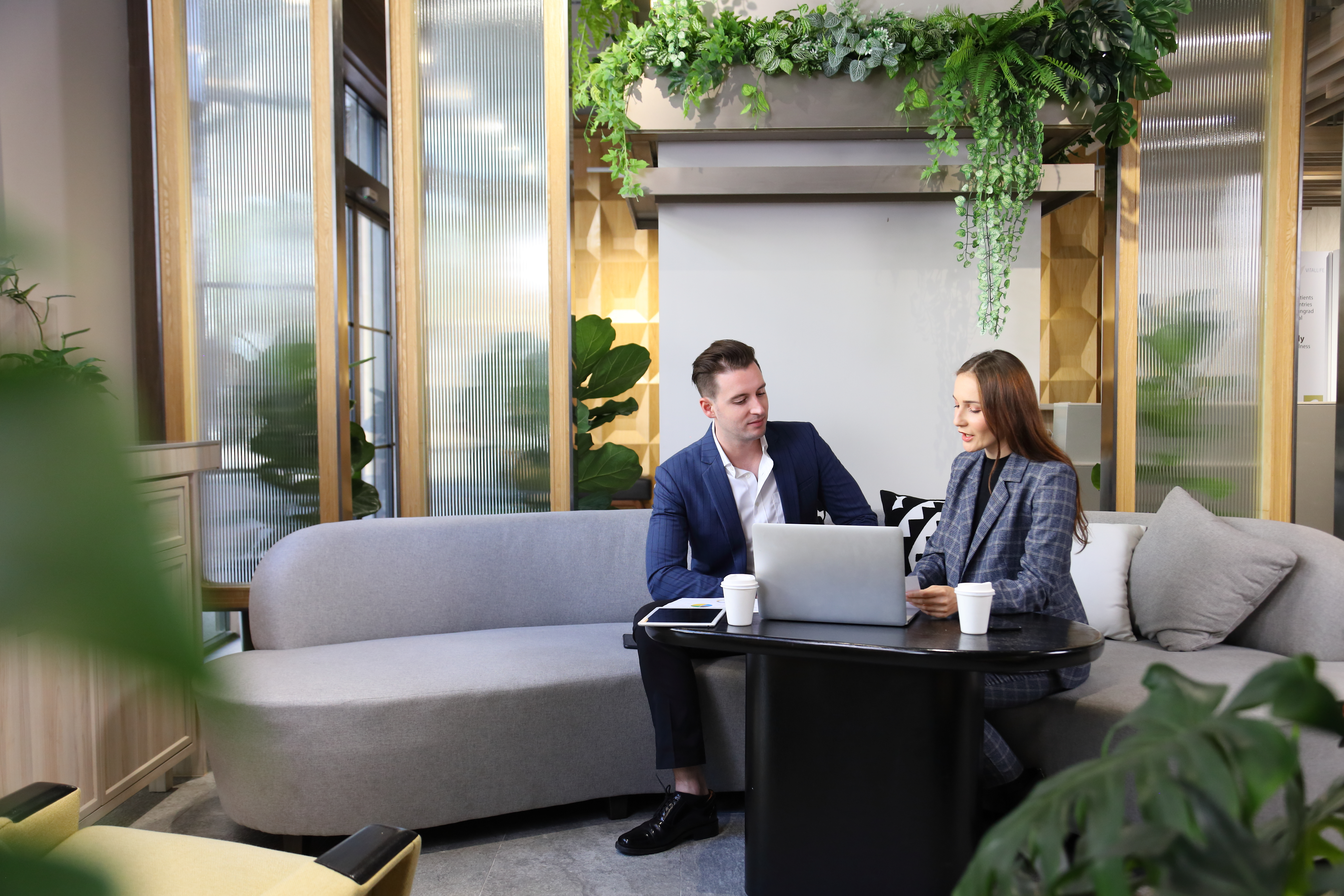
From 1974 to 2008 the UK productivity rate grew about 2.3% each year. However, from 2009 to 2020, it dropped to just 0.5%, highlighting the need for more effective strategies to boost productivity. But what is the secret to working smarter? The answer might surprise you.
Given these results, it's no surprise there's been a growing focus on how effective workplace design can offer employee productivity and engagement a boost. As such, offices and other work environments are now prioritising smart, meaningful workspace design in their plans.
Layout, arrangement of furniture, ambience... All of these have a profound influence on team dynamics, the way people work together and communicate, and as such, their productivity levels.
Workplace designers, therefore, play a key, almost unspoken role in creating collaborative and productive work environments.

Today, businesses need to stay attuned to the evolving needs and preferences of their employees, especially with the rise of hybrid working arrangements. By actively listening to the needs of their employees, and by choosing or adapting workspaces to meet those needs where possible, businesses can utilise effective workspace design to help secure their own success.
A happy workforce is a productive workforce. As we've already noted, research shows that employees who feel inspired by their surroundings approach their work with enthusiasm and are more productive.
Since workspace design can truly make or break the employee experience, it's imperative that architects and specifiers design an environment where people enjoy working. In doing so, businesses will be able to reap the rewards of their employees' enhanced productivity levels. Here are five key ways to curate a workspace design that puts productivity first.
Often when people think of collaborative spaces, minds immediately spring to open-plan design. However, open-plan offices can actually be a less effective design choice, when it comes to enhancing concentration and employee engagement.
Indeed, research found that 37% of people who work in an open-plan office believe that the design of their workspace decreases their productivity levels and morale. Various aspects, for example the distractions and noisiness of open-plan offices, can sometimes contribute to the stress that workers feel.
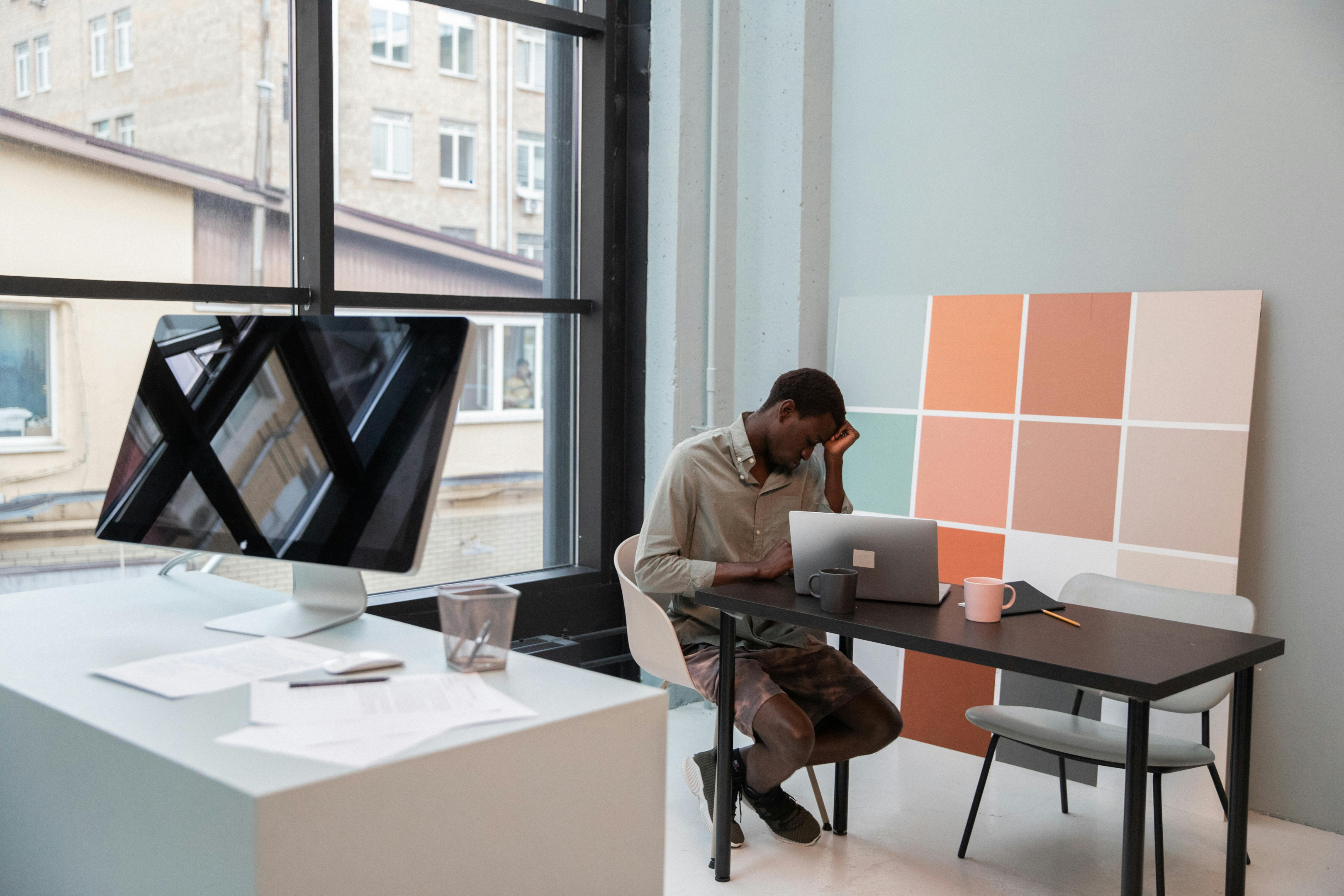
And because noise affects us all differently, comfort amidst rising audio levels can vary between neurotypical and neurodiverse individuals. This discrepancy in responses to noise can significantly contribute to employee dissatisfaction.
Better workplace design allows employers to accommodate the differing preferences of their employees. Employees may also enjoy having the option to work flexibly, across a variety of different settings, to better satisfy their changing needs throughout the day.
If your space allows, we recommend considering a range of working spaces – such as quiet nooks for those who want to focus, collaborative meeting spaces for colleagues to share ideas and informal break out spaces – in addition to the more traditional desk set up.
When it comes to creating a stimulating and productive office environment, one of the elements often overlooked is colour. Companies often stick to one colour throughout the work environment, choose options based on their brand identity, or trends.
However, choosing the right colours to suit different areas of an office can do more than just enhance the aesthetic, it can inspire different moods and ways of working.
For instance, blue and green, alongside natural 'green' features such as plants, horticultural spaces, and external views, have been shown to increase the mood and productivity levels of workers. Meanwhile, in collaboration spaces like breakout areas, why not experiment with more vibrant colours, like yellow and orange, to encourage creativity, and lively, engaging discussions? For more focused environments, neutral colour palettes promote calmness and eliminate distraction, in addition to making a space feel larger.
If it's not possible to redecorate in the workplace, or you simply don't wish to take such drastic measures, soft furnishings offer the flexibility to experiment. Little changes can have a large impact, and by understanding the psychological effects of colour, employers can create a positive and productive work environment.
Natural light and outdoor views are the two of the highest workplace desires. Employees sat nearest to windows and those with views of nature have naturally higher levels of productivity compared to their colleagues who sat under artificial lighting.
Exposure to natural light also increases vitamin D production, heightens alertness, and offers a boost in overall happiness in the way of releasing beta-endorphins. All of these factors can produce a significant impact on employees, helping them feel rejuvenated and prepared to take on their next task.
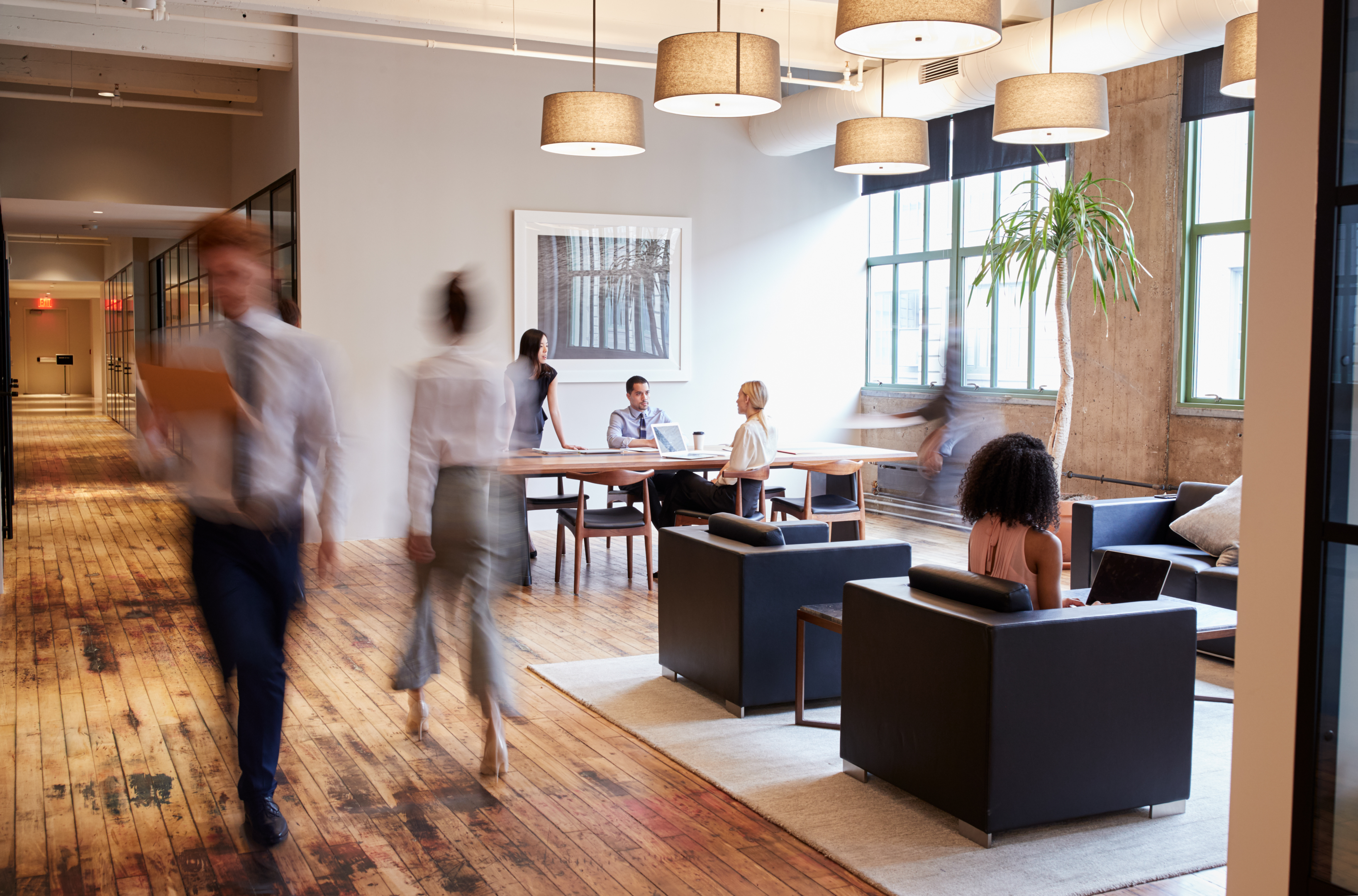
One study suggests natural light can also decrease chances of developing eye fatigue, headaches, and blurred vision by 84%, underlining how important natural light is for modern workplaces that want to prioritise performance and productivity.
If your office space lacks windows, why not opt for a lighter colour scheme or add mirrors and furniture made from reflective materials to enhance or reflect the natural light you do have?
Did you know that employees working in comfortable environments are typically 16% more productive? With the rise of flexible and hybrid working, integrating 'home comforts' within commercial office settings – 'resimercial' – has become increasingly popular.
The concept of resimercial design is simple: bringing elements of home into commercial design enhances overall employee satisfaction by rebalancing the home/work divide.
A resimercial office features natural materials like wood, to evoke a warm and welcoming atmosphere. Office furniture is designed with homely patterns and textures, incorporating soft, durable fabrics and a cosy feel, designed to deliver comfort and aesthetic appeal. Technology and ambient lighting are combined to create a multi-sensory experience, setting the tone, promoting tranquillity and relaxed thinking.
With the ever-increasing demand placed on employees, creating home-like environments where employees feel refreshed and want to spend time promotes a sense of belonging. Coupled with the flexibility of multi-use spaces, resimercial design can have a profoundly positive impact on productivity.
Did you know that just a 1% drop in hydration can result in a 12% drop in productivity? Ensuring optimal hydration is crucial for maintaining peak performance and catering to the needs of employees, clients, and visitors alike.
Our HydroTap range provides a convenient solution for instant access to filtered chilled, sparkling, and boiling water in the workplace. For those really wanting to make a splash, HydroMe infuses every pour with just the right touch of natural flavouring.
Both options are ideal for today's dynamic workplaces, ensuring high hydration levels and productivity for all.
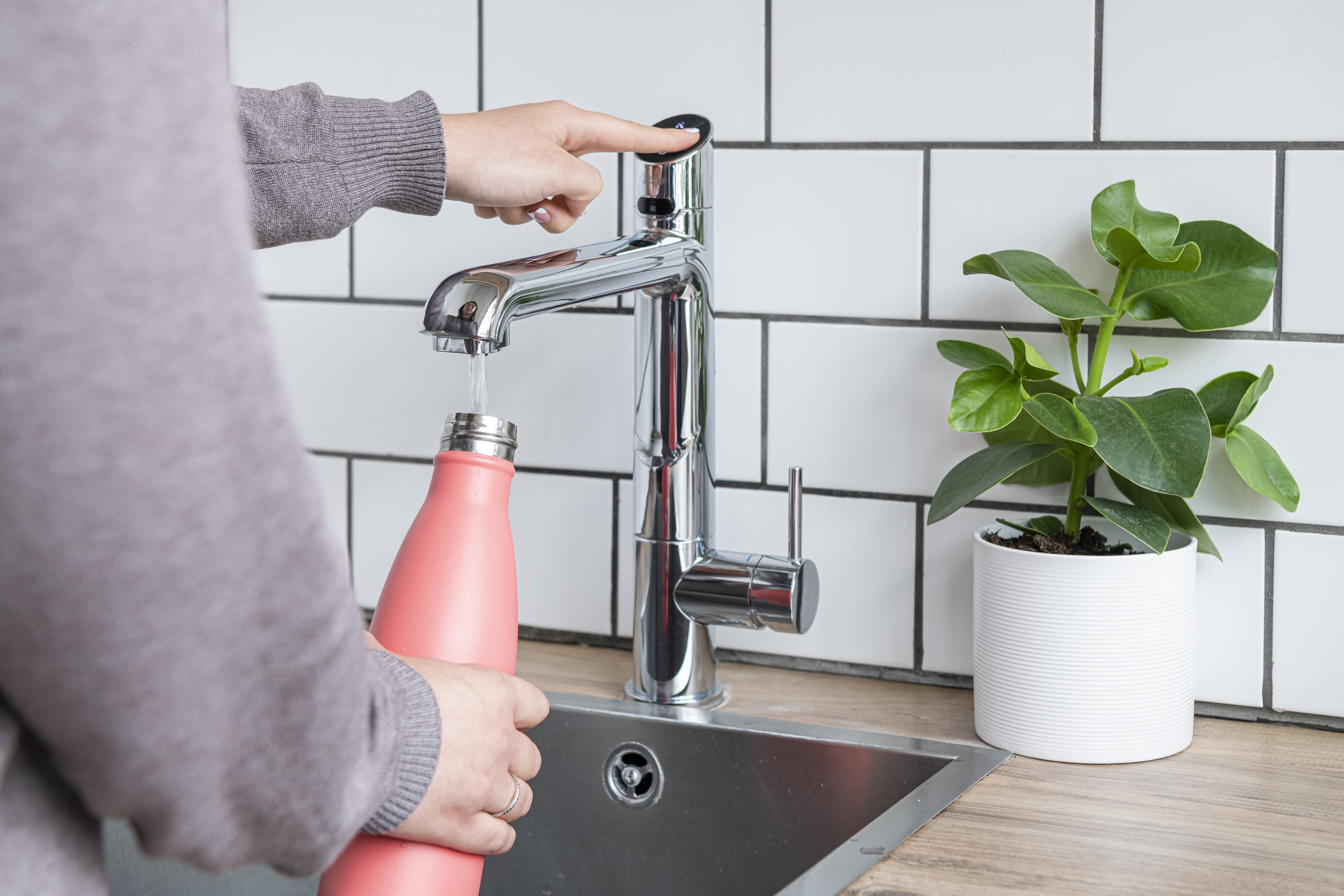
By following these tips, you're not only enhancing the productivity and employee satisfaction levels of those that will ultimately come to work in your workspace design, but you're also embracing the future of the office – the place where efficiency, innovation, sustainability, and wellbeing meet.
If you're interested in incorporating HydroTap or HydroMe into your project for ultimate convenience and improved productivity, get in touch today.
Talk to us about your next project, request a brochure or arrange a full product demo with one of our team.
